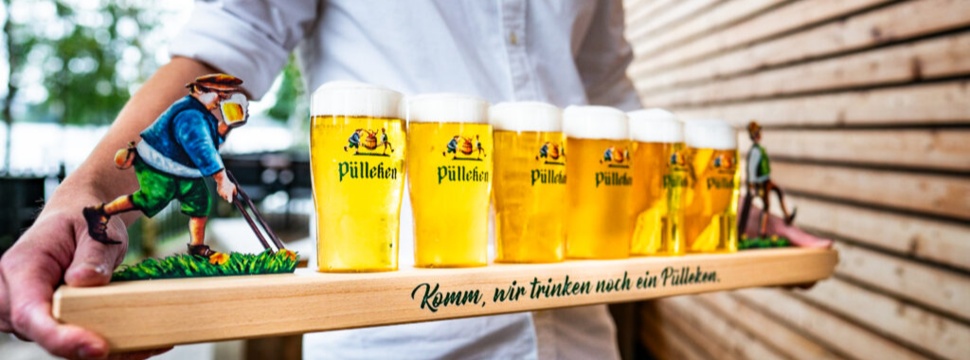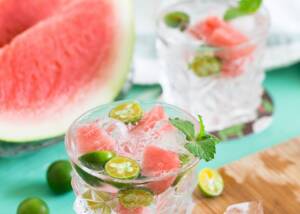Dynamic trend continued: Anniversary year brings Veltins all-time high with growth of 3.1%
News General news
- Market success cemented: Output increases to 3.36 million hl
- Variety favorite scores: Pülleken grows by +20.5%
- Clear commitment: gastronomy receives support

Consumers have rewarded the 200th anniversary year of the C. & A. Veltins brewery with an all-time high. Despite the continuing decline in the beer market in 2024, the company achieved a growth spurt of 3.1% and brewed more beer than ever before with 3.36 million hl. “We are continuing our dynamic development in the second half of the decade with attractive brands and a strong sales force in retail and gastronomy,” announced CEO Dr. Volker Kuhl at the presentation of the annual figures. Sales amounted to 459 million euros (+4.1%) and once again confirmed the strategic focus on value and margin stability. “The decline in consumer sentiment has had a negative impact on consumers - the retail and food service sectors have suffered. While Veltins was able to grow significantly above market level, the German beer market got off lightly,” said Dr. Kuhl, assessing the structurally expected volume loss of the overall German beer market in the last financial year, which will be around 1%.
Stable brand mix in the variety portfolio creates good performance
The driving forces in the 2024 financial year were the Veltins and Helles Pülleken brands. The Veltins variety portfolio grew by 3.4 % to 2.5 million hl and the pale Pülleken by 20.5 % to 328,800 hl, while the Grevensteiner brands contributed 129,200 hl and the V+ beer mix 285,200 hl to the result. In contrast, the non-alcoholic Fassbrause range caught up by 21.5 % and reached 109,600 hl. The fact that the traditional premium brand Veltins Pilsener was able to further expand its position in third place in the highly competitive segment of the German beer market is proven by its recent market share of 6.6 %*. This means that every 15th Pilsener sold in German stores comes from a Veltins brew kettle. The success of the pale Pülleken is considered exceptional throughout the industry because it is the only pale beer brand with its own profile and relevant volume growth. In the North Rhine-Westphalian beer market, pale Pülleken is now in first place in the range of varieties and ranks third in the tough competitive environment of brands with Bavarian folklore that are also active nationally. Rainer Emig, Sales Director Retail: “The stable brand mix in our variety portfolio ensures a good performance.”
“We are not leaving the lager segment to imported beers”
With the introduction of Veltins Helles Lager, the family-owned brewery launched a new variety and introduced the mild, tasty lager with an international reputation to the market in the summer. “We are making a clear statement with this and are not leaving the lager variety to imported beers alone at an early stage of the market,” said Sales Director Rainer Emig. Because the beer market is in a constant state of change and dynamic variety trends stand for a change in consumer behavior, the C. & A. Veltins brewery felt that the time had come to provide a product response to the new taste preferences. In the six-month launch period alone, Veltins Helles Lager in the distinctive green brand bottle sold 29,800 hl. In view of the market success in the still small but steadily growing variety segment, Emig announced an intensification of the marketing offensive for 2025. Unlike most international lagers, the new variety is brewed in accordance with the German Purity Law and without hop extract.
Impulsive brand concepts must surprise
“We need a new spirit of optimism in the country that makes people want to enjoy beer again,” said National Sales Director Retail Rainer Emig. “The beer market is and remains a seismograph for people's sensitivities and a lack of consumer enthusiasm is always a sign of economic malaise.” The C. & A. Veltins brewery has responded to this with its sought-after brands, thus contributing to more confidence in everyday life. “If you want to score points in the beer market of the second half of the decade, you have to surprise consumers with a strong brand concept and convince them with its product appeal,” said Dr. Volker Kuhl. The spokesman for the Veltins management left no doubt that the traditional company also sees future growth opportunities in the still shrinking beer market. With a view to the overall market, it will be the task of the breweries to continue to make the traditional product group in retail and gastronomy more attractive and to develop it further. Dr. Kuhl: “Anyone who focuses solely on holding on has already given up on the future. That is not our strategy.” The expectations of retailers and consumers towards producers are greater than ever. Non-alcoholic beers are at best a small glimmer of hope, because while the classic varieties have lost 11 million hl of output volume since 2005, non-alcoholic products have only been able to compensate for 3.5 million hl in the past two decades.
VAT reduction can ease the burden on restaurants and consumers
The Sauerland brewers from Meschede-Grevenstein continue to focus on continuity and innovation. “Consumer enjoyment also has something to do with brands and added value,” says Dr. Kuhl. Here, the brewery C. & A. Veltins will continue on its path of continuous market penetration in the second half of the decade. In view of the disappointing European Football Championship in Germany, Veltins sees the major events as increasingly weakened sales drivers. “If an international soccer tournament on our doorstep can no longer provide a stimulus for enjoyment, we have to strengthen the gastronomy at the grassroots level,” says Sales Director Rainer Emig. The return to 19% VAT and structural difficulties have made life difficult for the restaurant trade. The C. & A. Veltins brewery managed to stabilize its draft beer business at 456,200 hl (-0.1 %). The company sees a reduction in VAT from 19 % to 7 % as an effective instrument to counteract the reduced frequency of visits in many parts of the gastronomy sector. Emig: “This tax reduction is a politically very democratic instrument and helps restaurateurs and consumers alike.”
Investments unaffordable for many breweries
The brewing industry is once again facing a reorientation in 2025 after demand weakened once again. The structural losses continued to drag down output volumes. The loss in sales volume of -1.1 million hl by the end of November made it clear that the financial year did not provide any significant impetus for the German brewing industry, contrary to general forecasts of an upturn in consumption. Only a few breweries were able to report a positive annual result at the end of the year. Regional brewers were once again particularly affected in 2024, suffering more than the large companies in the industry due to cost pressure and reduced sales, especially as the economic situation of many breweries remained unchanged and the question of their continued existence arose. On the cost side, there is no sign of any relief in the medium term; instead, the brewing industry will be called upon to invest heavily in decarbonization, especially in the coming years. “It is already clear that this will endanger the existence of traditional companies,” said Dr. Volker Kuhl. Veltins itself has already initiated the transformation process. Initial investments have been made in photovoltaics, and further investments in wind power will follow.










